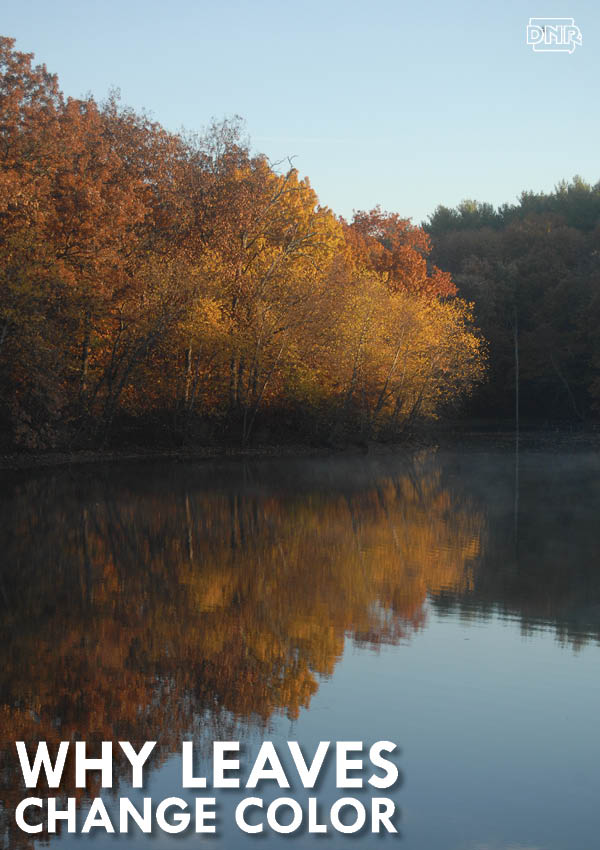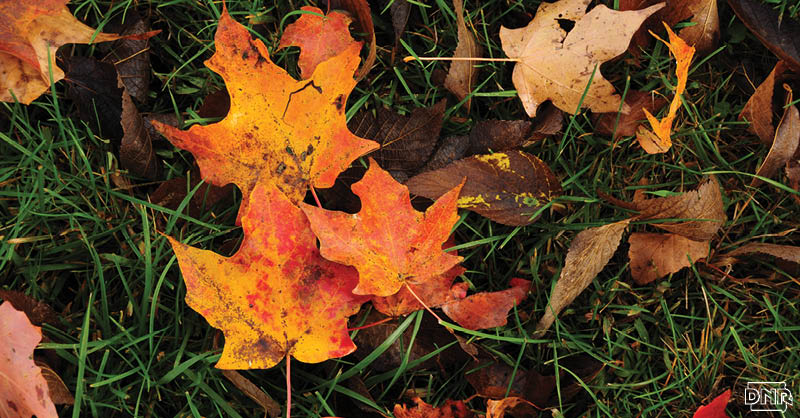There is much speculation and folklore associated with the spectacular colors Iowans enjoy every fall in our hardwood forests. Some believe the change is caused by warm days followed by cool nights. Others feel it is due to the changing length of days, while others cite soil acidity and tree location. Some say elves paint the forests.

Actually the color is always there, just masked by chlorophyll—the green compound responsible for the manufacture of foods in plants. Chlorophyll breaks down in sunlight and is constantly replaced. As long as the plant actively grows, enough is produced to keep leaves green.
Changing color is associated with dormancy. Longer nights trigger the production of phytochrome and the onset of dormancy. Chlorophyll production drops, green color fades and bright reds, oranges, purples and yellows always present are unmasked.
Leaf color depends on the pigment present and the leaf sap acidity. When this process starts and how early and brilliant the colors depend on the region of the state and fall weather conditions. Cool nights destroy chlorophyll quickly, but freezing temperatures inhibit production of red pigments.
Cloudy days and warmer nights produce less brilliant colors because chlorophyll breaks down more slowly. Wind and rain may cause early leaf drop.
So in this case, everyone is right in part....except for the elf believers.
--
Be sure to get out there and enjoy the fall colors - use our fall color hotline to get the latest updates on peak colors around the state at www.iowadnr.gov/fallcolor.
This article originally appeared in the September/October 2008 issue of Iowa Outdoors magazine.
